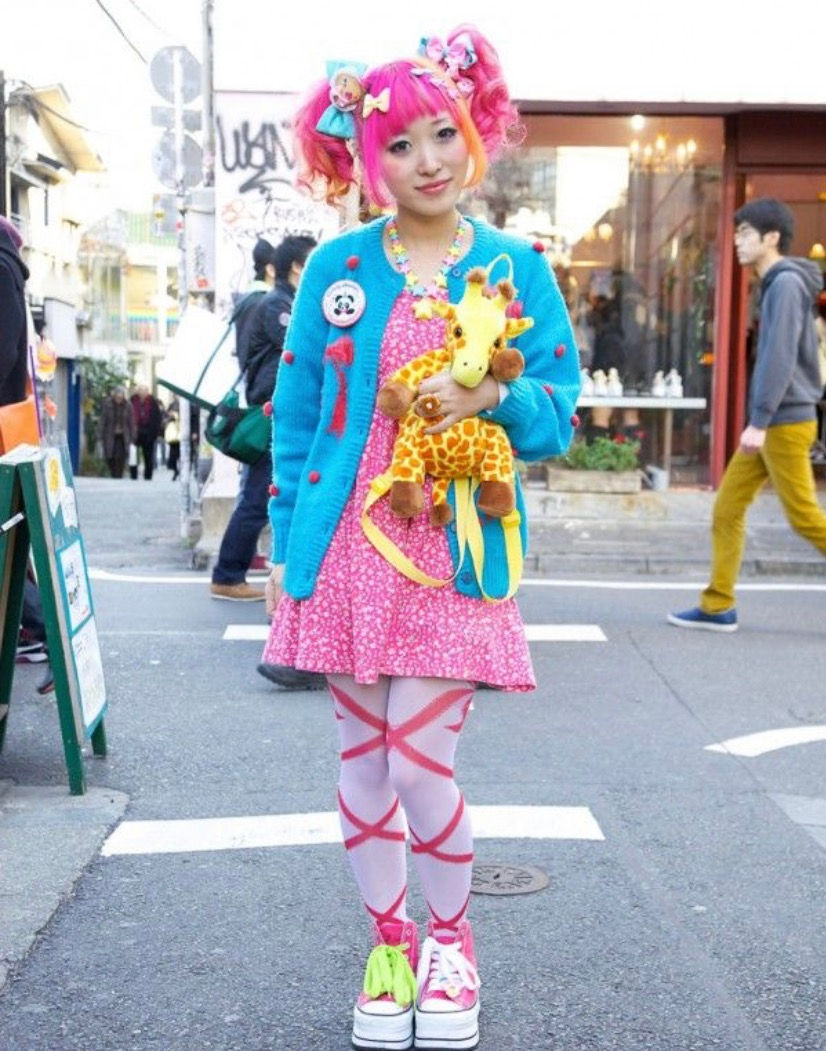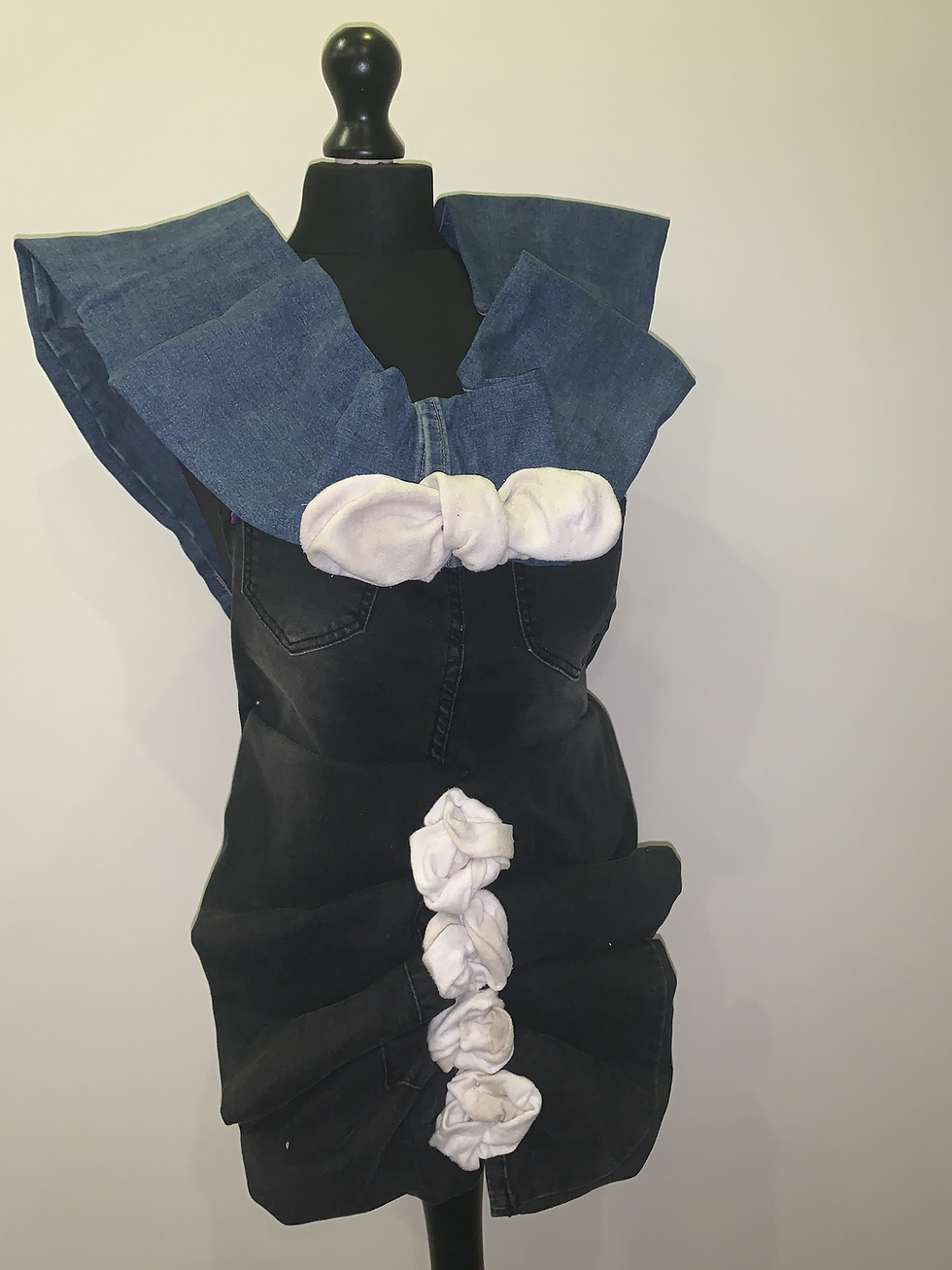Fashion History - Japanese Avant Garde
- Isobel Millington

- Nov 7, 2020
- 5 min read
Updated: Jan 13, 2021
Contempary Japanese style
Japanese designers Hanae Mori and Kenzo Takada were showing in Paris in the 1970s. The fabulously unique designers Issey Miyake and Kansai Yamamoto brought the Avant-Garde movement To the fashion capitals. Such designers as Issey Miyake, Yohij Yamamoto, Kansai Yamamoto, Junya Watanbe and Rei Kawakubo mad a colossal impact on the world fashion scene in the late twentieth century, challenging established nations of Beauty and turning fashion into art. Today a new generation of radical designers, among them Tao Kuirhara and Jun Takhashi are fast gaining acclaim.

The Japanese fashion revolution during the 1980s dramatically changed the fashion world. Avant-Garde Japanese fashion designers such as Issey Miyake, Yohij Yamamot and Rei Kawakubo of Comme des Garcons introduced a radically new conception Of fashion to the cat walks of Paris. Utilizing innovative textile technologies, together with aspect of traditional Japanese clothing culture. These specific designers were instrumental with creating a new realitonship between body and clothes, a new attitude towards the beauty if imperfection, and a new appreciation of Avant-Garde fashion as 'art'. Japan continues to be on the cutting edge of fashion. The Japanese fashion today embraces the Avant-Garde looks accosted with the first wave of Japanese designers in the 1980s. However there is a huge range of oriented street styles. The Harajuku district in Tokyo is infamous for the growth of Japanese street style, where a plethora of styles can be seen and presented. This can vary from gothic to Cyber-punk, cos-play and victorian. Contemporary Japanese fashion styles remains significantly global precisely because this style mixes elements of Avant-Garde with elements of sub cultural ands street style.
Issey Miyake
Issey Miyake is one of the foremost textile innovators in fashion history. She established the Miyake design studio in Tokyo in 1970 to produce experimn=ental garments and push the boundaries of what clothes can be. Issey Miyake is mostly known for technologically-driven clothing style and 3D aspirations of the body adorment.
the images above show some of Isseys most iconic range of clothing that expands from. two dimensions diametric shapes into structured shirts, shirts trousers and dresses. there are ten basic patterns that create three dimensional structures with smoothly curved surfaces by folding flat materials. The flat pieces are essentially orogarmi and were sprayed with matallic fabric paints when folded, to reveal gradients when opened and worn on the body.
Rei Kawakubo
In 1981 Rei Kawakubo shocked fashion editors and buyers with oversized proportions,dissregarded for gender and a predominant use of black. She founded the label 'Comme des Garcons' in 1973 where the focus was on deconstruction, breaking down clothes and putting them back together in peculiar unexpected ways.
Yohji Yamamoto
Yohji Yamamoto is known for his alternative vision and often dubbed 'the poet in black'. Yamamoto is known for an Avant-Garde spirit in his clothing, frequently creating designs far removed from current trends.

His signature pieces of fashion (oversized sillohets in black) often feature drapery in varying textures. Fabric is always the foundation of his design and the behaviour of fabrics and clothing's what best defines his sillohette. Yamanotos use of simple palete black with ocassional splashes of colour and a style that is once sophisticates and plain looking creates clothing for both men and women that instantly become timeless classics.
Kansai Yamamoto
Kansai Yamamoto is one of the leaders in Japanese contemporary fashion, in. particular during the 1970s and 1980s. He shot to fame in 1972 when he designed the stage costumes for David Bowies 'Ziggy Stardust' tour. However he made his Paris debut in 1975 with designs inspired by Kimono and Kabuki costumes. Yamamoto is famed for interrupting traditional arts and dress in striking ways to create modern clothes.
Junya Wantabe
Junya Wannabe began his career working for 'Comme des Garcons' under mentor Rei Kawakubo where he was hired as a pattern drafter. However he began designing under his own name within the fashion house in 1992. Wantabe like his mentor Rei Kawakubo, is renowned for designing innovative distinctive clothing and is often considered a 'technique couture' designer creating usually structured clothes out of modern, technical materials.
Wannabe uses soft delicate fabrics to create structure and body with fabric manipulation and origami techniques.
Jun Takahshi
Jun Takahshi began showing in Paris in 2002. However the designer founded his undercover label in 1993. Takahshi seeks to challenge preconceived notions both in his designs, and their presentation. The designer has staged shows with identical twins in almost identical clothing. He created jackets with branches producing and growing from them, and styles models with flower arrangements covering their faces.
Harajuku and Japanese street style
Harajuku is a district In Tokyo, Japan and has become world famous as Japans centre of street fashion. This square mile area is jammed packed with boutiques, fashion malls and chains. Every single day of the year tens of thousands of people come here to shop, hang out and see what the latest trends are. The trends come and go at lighting speed in Harajuku.

Decorative Goth-loli, cyber-punk, More-girl, the list is endless. Many trends happen at the same time and influence each other. Often its impossible to determine what gave birth to what style and trend. This discount and freedom is possible because there is no social message. Harajku fashion is about fun imagination and is fashion in its purest most unique peculiar form.
My fashion history Avant Gard Design
For my design inspired by the Japanese Avant-Garde I wanted to design something peculiar and unseen withholding many features from the collections from a few of the individual designers. In my design I wanted to present elements from Issey Miyake's collection. These elements were the significantly peculiar folds and features of origami performed through items of clothing. I decided to preform these elements in a beautifully designed volumeisedf dress. The folds and origami features are presented throughput my dress from the shoulder area to the skirt. I also created an origami effect in the boots I designed with the origami dress. To make my design magnificent and and dazzling to viewers eyes I wanted to create an unseen style of clothing. Therefore I designed a eye catching piece to my design on the shoulders creating an origami effect which elegantly grew out from the shoulder area. I also included elements from Junya Wantabe's collection. These elements were the delicate classy frills throughout the dress design. The origami designed features and the frill features complemented eachother hugely creating a fabulously unique design which would make a futuristic item in fashion. My design creates a modern style in fashion with the delicate origami folds and elegant frills.

My marked Feedback on my design

My recreation design of Issey Miyake's collection
I wanted to recreate a dress in the style of Issey Miyake's collection by pinning jeans and socks onto a mannequin in a specific way. I decided to use blue denim jeans for the collar folding them and pinning them onto the maniquenn in the style of Issey Miyake's collection. I folded the jeans to create a nice pleated effect which presented a gorgeous pleated oversized collar. I then used black denim jeans to fold and pin onto the mannequin to create the bottom of the dress. I used the same folding technique I did for the collar. After this was all pinned in place, I then added white socks to create a floral effect on my designed outfit inspired by Issey Miyake's collection. I also used the white socks to create a delicate bow which I pinned in place under the bust area.

My marked feedback of my recreation design
















































Japanese avant-garde fashion is such a fascinating movement the creativity, structure, and storytelling behind every design are truly inspiring. It reminds me how bridal fashion also tells a story through intricate craftsmanship and elegance. You can explore Zara Shah J’s wedding dresses for designs that beautifully blend art and tradition. Visit: https://zarashahjahan.com/collections/bridals